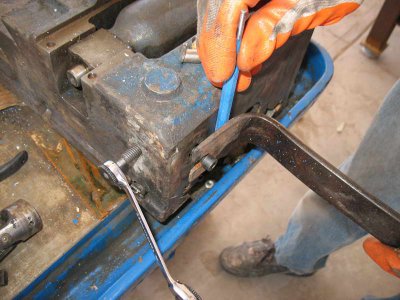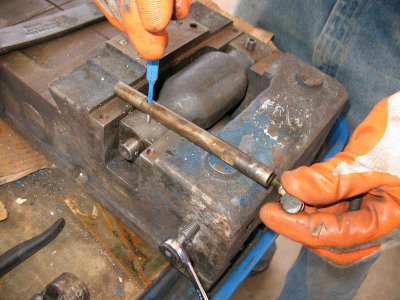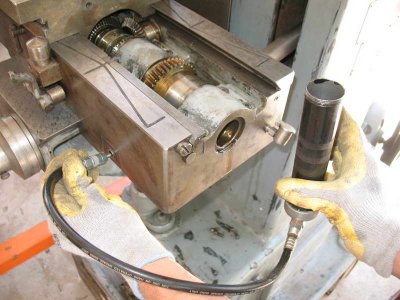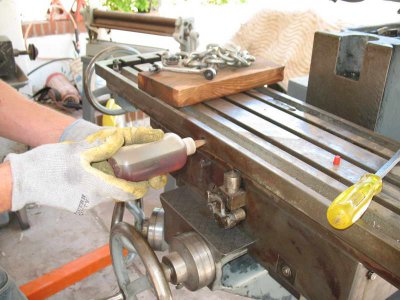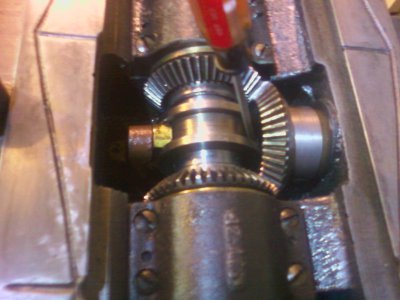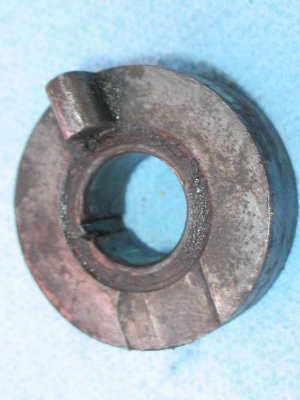- Joined
- Sep 3, 2011
- Messages
- 478
Evan,
I'm sorry that I haven't been able to keep up with you. Hopefully you still have the table off, as there are several things about the lube system that you should check.
I think it's best to have the table gib out when removing or installing the table. I also have some suggestions on how to use your lift to install the table.
Let me know where you're at.
axe,
I don't see a problem using a impact tool on the bearing retainers. If I have one that turns out to be tough to remove I'll probably build some sort of tool that uses a deep well impact socket as part of the pin wrench. However, I wouldn't go nuts using it. I would soak everything down with a good penetrating oil (WD40 is not a good choice) and give it a few bursts with the impact tool. If that didn't break it loose, I would soak it down again, wait 24 hours and repeat. Eventually it will come loose. Heating the casting with a heat gun or quartz light might help as well. Soak with penetrating oil; heat; cool; soak; wait; heat; try impact wrench; soak; wait; repeat...
Cal
I'm sorry that I haven't been able to keep up with you. Hopefully you still have the table off, as there are several things about the lube system that you should check.
I think it's best to have the table gib out when removing or installing the table. I also have some suggestions on how to use your lift to install the table.
Let me know where you're at.
axe,
I don't see a problem using a impact tool on the bearing retainers. If I have one that turns out to be tough to remove I'll probably build some sort of tool that uses a deep well impact socket as part of the pin wrench. However, I wouldn't go nuts using it. I would soak everything down with a good penetrating oil (WD40 is not a good choice) and give it a few bursts with the impact tool. If that didn't break it loose, I would soak it down again, wait 24 hours and repeat. Eventually it will come loose. Heating the casting with a heat gun or quartz light might help as well. Soak with penetrating oil; heat; cool; soak; wait; heat; try impact wrench; soak; wait; repeat...
Cal


